Construction of Cres Solar Power Plant Still Up in the Air After a Two Year Delay
February 14th, 2022 - The power plant on Cres will produce about 8.5 million kWh of electricity per year, enough to supply some 2,500 households
The Cres solar power plant, a development worth 41 million kuna situated at the location Orlec-Trinket on Cres island, is to be the largest solar power plant in the country. That is, if construction ever kicks off. The foundation stone was laid almost two years ago, and so far, next to nothing has been done, reports Novi list/Marinko Glavan.
Solar panels for the entire power plant have been manufactured, and all that remains is to install them, connect them to the grid and put them into operation. However, due to disputes between the investor HEP and the contractor, a consortium made of PVI Solar, PVI GmbH, Intecco and Deling, a solar power plant that was supposed to start producing environmentally friendly electric power in late 2020 not only isn’t in operation yet, but still has to be built.
The Cres solar power plant at the Orlec-Trinket site has an estimated capacity of 6,5 megawatts (MW), enough to meet the needs of about 2,500 island households. It’s supposed to ensure a stable supply of electricity and increase the energy self-sufficiency of Cres and Lošinj islands, particularly in periods of increased consumption brought on by the tourist season.
The solar power plant project, which was supposed to be the first large solar power plant in Croatia with a projected annual production of about 8.5 million MWh, was devised entirely by the Kvarner Regional Energy Agency that is owned by Primorje-Gorski Kotar County, who all but gifted the project to HEP.
The Franciscan order on Cres ceded 17 hectares of land necessary for this development, and two years ago, all that remained was seemingly just a matter of formality. The public procurement process was completed, the contractor was selected, the works formally started, and the foundation stone ceremonially laid by HEP President Frane Barbarić, then Minister of Tourism Gari Cappelli, and Minister of the Sea, Transport and Infrastructure Oleg Butković. However, not much has happened on the construction site since June 2020.
Asked what was going on with construction of the power plant, Cres Mayor Marin Gregorović said that the Town of Cres doesn’t have any information either, although the question has been raised at a Town Council meeting.
‘We raised the question with the investor, but didn’t receive a reply. There are plans for the construction of the second phase of the Trinket power plant, which should ultimately have a capacity of about ten megawatts. In the Town of Cres we believe that local self-government units, namely the towns of Cres and Mali Lošinj, should be involved in these projects so that our citizens can benefit from them. This way, I fear that the surplus of produced electricity will be exported to the mainland outside the tourist season, and the citizens of Cres won’t benefit from it. Neither will the Town of Cres, except for local fees for construction’, said the mayor.
‘We’re building an energy community on Cres and we’re planning to build another solar plant on the northern side of the island, and where the solar plant at Orlec is considered, I can only say I’m disappointed as it should have already been in operation, meeting the greater part of our citizens’ needs. Outside the tourist season it would meet the needs of the island entirely’, added Gregorović.

According to the information known to Novi list, the delay was caused by an increase in building materials, as well as other costs, which led to a dispute between HEP and the contractor. Novi list sent an inquiry to HEP as to whether the contractor had requested a price correction and if so, in which amount. They also inquired whether the contract was still in force or had been terminated in the meantime.
HEP replied that the project was delayed due to the contractor having failed to meet their contractual obligations within the agreed deadlines.
‘We are working intensely to resolve this situation and expect the project to continue soon.
The solar power plant will be built in its full projected size, with a connected power of 6.5 megawatts. We wish to note that the local manufacturer Solvis has already manufactured and delivered all 20,332 photovoltaic modules required for the power plant.
The Cres solar power plant will produce about 8.5 million kWh of electricity per year, which corresponds to the consumption of some 2,500 households. The investment is valued at more than 40 million kuna’, stated HEP.
Novi list also sent an inquiry to the contractor, PVI d.o.o., to which the company replied they had faced unforeseen difficulties.
‘Namely, HEP made modifications to the project task after the contract was signed, in order to enable confirmation of the main project and obtaining of a building permit. This was preceded by the necessary change of the obtained location permit, which could not have been foreseen before the conclusion of the contract, and all of the above required additional time before construction works began on the solar power plant.
Restrictions were then introduced to fight the COVID-19 pandemic, followed by a significant increase in prices of materials in the construction sector. Such a demanding and large project requires open communication between key stakeholders, as well as a full understanding of the context that is particularly unpredictable in a pandemic.
Unfortunately, as a client, HEP did not show reasonable understanding for the described difficulties which caused the disruption in the construction schedule. Negotiations are still ongoing, with the goal of finding an appropriate solution and enabling the execution of the project as soon as possible’, stated the contractor.
Floating Bin Installed in Cres Port to Filter Sea Water and Collect Waste
February 14th, 2022 - The device collects an average of 1.5 kg of floating debris per day
A new device was recently installed in Cres port to help prevent sea pollution. Called ‘Morska škovacera’ in Croatian, the sea bin is meant to collect floating debris in the main port on Cres island.
The floating bin continuously filters seawater by collecting plastic, microplastic, detergents, oils and other substances from the surface, preventing them from floating out to sea or falling to the seabed where they can harm marine life.
The device collects an average of 1.5 kg of floating debris per day, reports Morski.hr.
A panel was installed on the pier containing more information regarding the new device and the praiseworthy project in general.
‘The floating waste arrives in the sea through the negligent behaviour of individuals, but also as a consequence of activities in various economic fields and represents a significant global environmental problem with a wide range of impact on marine life. Among the waste that reaches the sea, plastic is a special problem because it gradually decomposes into so-called microplastics which, absorbing various toxic substances and harmful microorganisms, enter into the food chain and eventually come to the table of fish consumers, endangering their health.
The goal of the project Morska škovacera is to raise awareness of the general public about the issue of floating waste and plastic in the sea, and is part of a broader effort of the Town of Cres and the island community to reduce the use of plastic and production of marine waste’, the panel reads.
The project was implemented by the local utility company Komunalne usluge Cres Lošinj d.o.o in cooperation with the County Port Authority of Cres. It’s worth around HRK38,000 and was financed by the European Maritime and Fisheries Fund.
HZZ: 130,993 Jobless at End of January
14 February, 2022 - A total of 130,993 unemployed persons were registered with the Croatian Employment Service (HZZ) at the end of January 2022, up by 4.2% from the previous month and down 20.8% while compared with January 2021, the HZZ said on Monday.
HZZ records show that there were 5,278 unemployed people or 4.2% more at the end of January 2022 than at the end of December 2021.
Daily figures, available on the HZZ website, show that 129,817 unemployed persons are currently registered with the HZZ, which is 1,176 fewer than at the end of January. Currently, HZZ has 29,810 job vacancies advertised.
A comparison of data from the previous month shows that at the end of January 2022 there were 34,352 jobseekers or 20.8% fewer than at the end of January 2021.
A total of 16,683 people registered with the HZZ in January 2022, which is 3.4% more than in January 2021. HZZ also notes that 11,405 people were signed off from the unemployment register, which is 7.3% more than in January 2021.
In January 2022 a total of 29,396 people, or 22.4% of the total number of unemployed persons, were eligible for the dole, which is 18.8% or 6,788 fewer than in January 2021, HZZ reported.
Ancient Wells of Rajčica Valley, Inland Dalmatia's Hidden Wonder
February 14th, 2022 - While most tourists tend to gravitate towards the coastline, there are many hidden gems to discover in inland Dalmatia. Meet the wells of Rajčica valley, a magical place that looks as if it came straight out of a fantasy novel
Less than an hour’s drive from Split, in the rugged karst landscape of the Klis hinterland, you’ll stumble upon an extraordinary site. Known as Rajčica, the valley near Nisko village is home to a cluster of 10 ancient wells.
And when we say ancient, it’s actually a bit hard to pinpoint the moment in time when the wells were built. They are commonly referred to as Roman wells, some believe they're from the Illyrian times, and it’s also said they date to late Middle ages, namely the 13th or 14th centuries.
Whatever the case, there’s a certain mystical quality to the picturesque site; it appears to be timeless. The wells are all alike in size and design; they’re closely spaced, each encircled by a dry stone wall and fitted with stone steps descending to the water surface.
Three of the ten wells are shrouded by greenery and have a lower water level, making them somewhat harder to spot. Since the site is located in a valley, heavy rain will often leave the area flooded; during summer droughts, the water level drops.
It’s unknown whether there are any underground rivers in the area, or if the wells are mainly getting water from precipitation. Nestled among the wells is a small pond where the cattle roaming the area often comes to drink.
The name of this wondrous site is another mystery that remains unsolved. Why Rajčica valley? The name literally translates to tomato in Croatian, but it’s believed to be more likely to refer to the place being a paradise in nature (raj = paradise, heaven). Finally, there are sources that claim the toponym originates from a family name that had a historical presence in the area (the valley of the Rajčić).
The wells of Rajčica used to be a seldom visited site, hidden away in a somewhat inaccessible location where one would have to fight their way through the thicket to get to the untouched clearing.
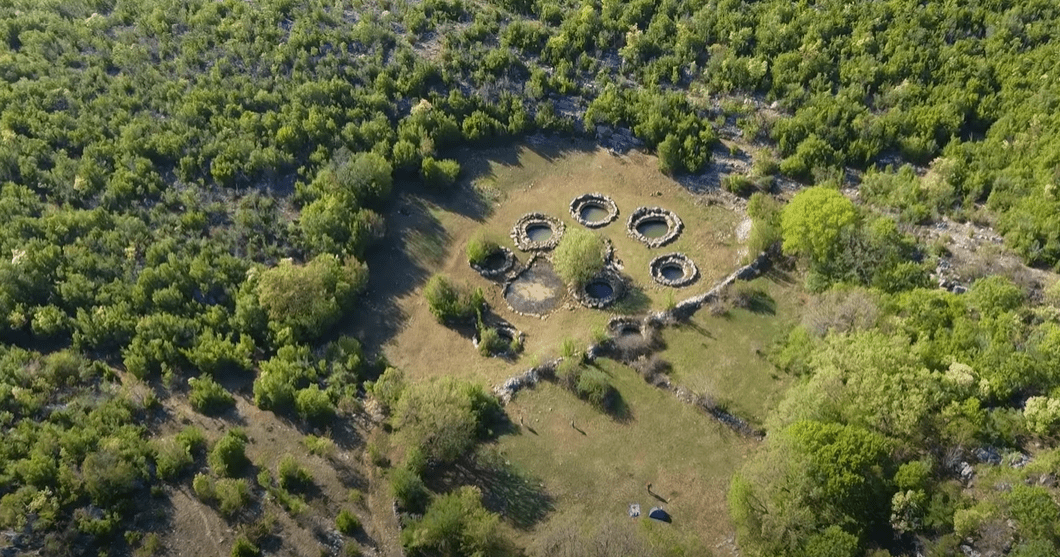
Rajcica valley / YouTube screenshot
These days, it’s more visitor-friendly. Backed by EU funding, Klis Municipality first had a forest road restored that connected the nearby villages of Brštanovo, Nisko and Matase, and which also doubles as an access road to Rajčica valley.
In a more recent part of the project, they had a picnic site built near the ancient wells. As of late 2021, there are seating areas, a grill, and even a balota rink as a nod to one of Dalmatia’s favourite pastimes.
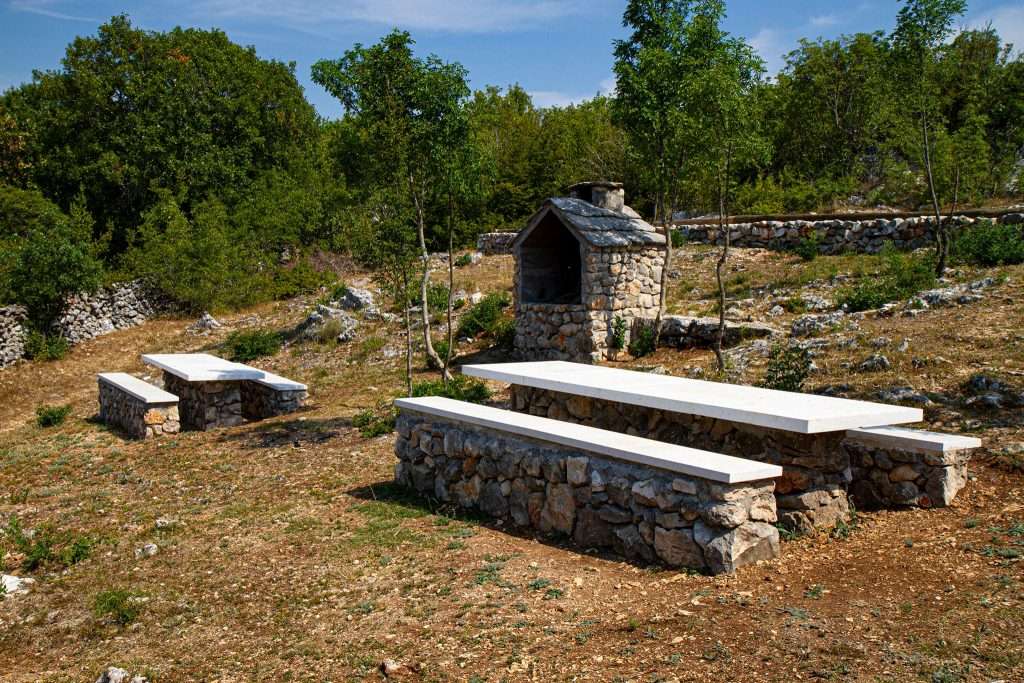 Picnic area / klis.hr
Picnic area / klis.hr
Rajčica valley gained in popularity since it was touched up a bit, especially as the pandemic drove more people to forgo urban destinations and spend time in nature instead. It’s not overcrowded yet, so if you happen to be looking for trip ideas, it just might be the perfect moment to visit the mystical wells before they become too popular among the locals and tourists alike.
Bridge Launches Interpellation on Government Work Over Rising Energy Prices
14 February, 2022 - After meeting with the parliamentary opposition on Monday, the Bridge party announced that it was launching an interpellation on the government's work over rising energy prices.
"The Bridge group convened the meeting with the opposition to discuss certain proposals for an interpellation regarding the issue of energy," Zvonimir Troskot said, adding that there were several proposals and a final one hasn't been decided on.
Each parliamentary group presented short and long term measures to buffer inflation, he added.
Bridge believes that the government was not prepared for this crisis and that it is tardy in adopting measures to relieve the situation with rising energy and food prices. The party thinks that the focus should be on fiscal relief, by reducing VAT and abolishing excise taxes on fuel, and on social transfers, said Troskot.
"For months we have been pointing out the problem of inflation and increasing energy prices, and the government has done absolutely nothing about it, only saying that there won't be increases in gas prices before 1 April," he said.
Bridge also commented on the government's idea to tax Croatian residents working abroad, saying this was yet another blow to the weakest, aimed at filling the budget.
The Tax Administration is now targeting micro-enterprises and it's obvious that Finance Minister Zdravko Marić is trying to fill the state budget by hitting on the weakest, who could be the backbone of our economy, Bridge MP Nikola Grmoja said.
Zagreb Archbishop and Mayor Discuss Further Cooperation
14 February, 2022 - The Archbishop of Zagreb, Cardinal Josip Bozanić, met with Mayor Tomislav Tomašević on Monday to discuss further cooperation between the Archdiocese and the City in matters of common interest, notably in social and charitable work.
The focus was on projects for the common good, including care for the citizens hardest hit by the consequences of the March 2020 earthquake, the COVID-19 pandemic and the increased cost of living, the Archdiocese Press Office said.
Also discussed were challenges in the post-earthquake reconstruction process, and providing premises for the assembly of believers in parishes where there are no churches.
The archbishop and the mayor expressed openness to working together in resolving all issues for the common good of all citizens.
Ministers Say Croatia and Kosovo Will Boost Cooperation in Transport, Infrastructure
14 February, 2022 - Over the next few years Croatia and Kosovo will strengthen economic cooperation, particularly in the area of air and rail traffic as well as in infrastructure, Croatia's Transport and Infrastructure Minister Oleg Butković and Kosovo's Infrastructure Minister Liburn Aliu said in Zagreb on Monday.
The two ministers expressed their satisfaction with the meeting in Zagreb where they discussed important topics and activities by the two ministries and announced the next round of their talks for April in Priština.
After the meeting, Butković told reporters that he had informed his colleague from Kosovo about Croatia's investments in infrastructure.
"We are currently investing HRK 25 million in transport infrastructure, and apart from investing in roads most of the outlays are for the railways and that is why, executives from the HŽ Infrastruktura nad HŽ Cargo railway companies attended today's meeting," Butković said, adding that investments in transport and infrastructure are important for both countries.
The two ministers also discussed air connections and relaunching profitable Zagreb-Priština flights with Butković saying that this could possibly restart in about a month and a half.
Butković underscored that Croatia wants to increase commodity trade between the two countries and he will be accompanied by several business people during his visit to Priština.
Minister Aliu expressed his thanks for the meeting with the minister of, as he said, a friendly country and said that Kosovo wants to be connected more with other countries in the European Union and to hear about their experiences in building infrastructure.
"Our main focus is on developing and investing in railways as well as air connections and it is important for us to be acquainted with Croatia's experiences. Apart from experience we need cooperation with companies and we are prepared to cooperate with them and revive the Zagreb-Priština flight," underscored Aliu.
The parliamentary deputy representing the Albanian minority, Ermina Lekaj Prljaskaj, and representatives from the railway sector and others attended the meeting.
Responding to reporters Butković confirmed that there were no more obstacles to prevent the construction of the final leg of the Zagreb-Sisak motorway.
"Hrvatske Autoceste (HAC) will sign a contract for the remaining 11 kilometres of the motorway towards Sisak this week and this refers to an HRK 280 million (without VAT) project and its implementation will last for 24 months," said Butković.
The HAC motorway management company on 28 January announced that it had once again selected the Colas Hrvatska and Geotehnika consortium's bid of HRK 281.34 million without VAT to construct the Lekenik-Sisak section o the A11 Zagreb-Sisak motorway.
The consortium was originally selected in October 2021 but the Strabag company submitted an objection and the call for tenders was repeated.
Croatia Reports 1,061 New Coronavirus Cases, 64 Deaths
14 February, 2022 - Croatia has registered 1,061 new coronavirus cases and 64 COVID-related deaths in the last 24 hours.
The number of active cases in the country currently stands at 31,000, and 2,097 of them are being treated in hospitals, including 146 who are on ventilators, while 16,642 persons are self-isolating, the national coronavirus response team said on Monday.
Since 25 February 2020, when the first infection with the new SARS-CoV-2 virus was confirmed in Croatia, 1,018,367 people have been registered as having contracted the virus, of whom 14,537 have died and 972,830 have recovered, including 6,477 in the last 24 hours.
So far, 4,409,465 people have been tested for the virus, including 2.081 in the last 24 hours.
By 13 February, 5,159,918 COVID vaccine doses had been administered, with 56.72 per cent of the total population, or 67.48 per cent of adults, having been vaccinated. A total of 2,301,799 persons have received at least one dose and 2,219,165 of them have been fully vaccinated, which is 65.21 per cent of the adult population.
Stunning Croatian Film Locations Beyond Game of Thrones
14 February 2022 - With its breathtaking architecture and a variety of natural wonders, ranging from the turquoise waters of the coast to lush natural parks, it is no surprise that Croatia is one of the most popular film settings in the global entertainment scene. A look at Croatian film locations around the country.
Naturally, we simply cannot discuss filming sites in Croatia without bringing up Game of Thrones. For almost a decade, the series captivated international audiences with its depiction of dragons, kingdom politics, and white walkers, with later seasons drawing almost 32.8 million viewers per episode worldwide.
Yet beyond Cersei Lannister’s walk of atonement down the Jesuit Stairs or the Tyrells counseling Sansa Stark in the Trsteno Arboretum, lie other stunning locations that you may not have known were filmed in Croatia.
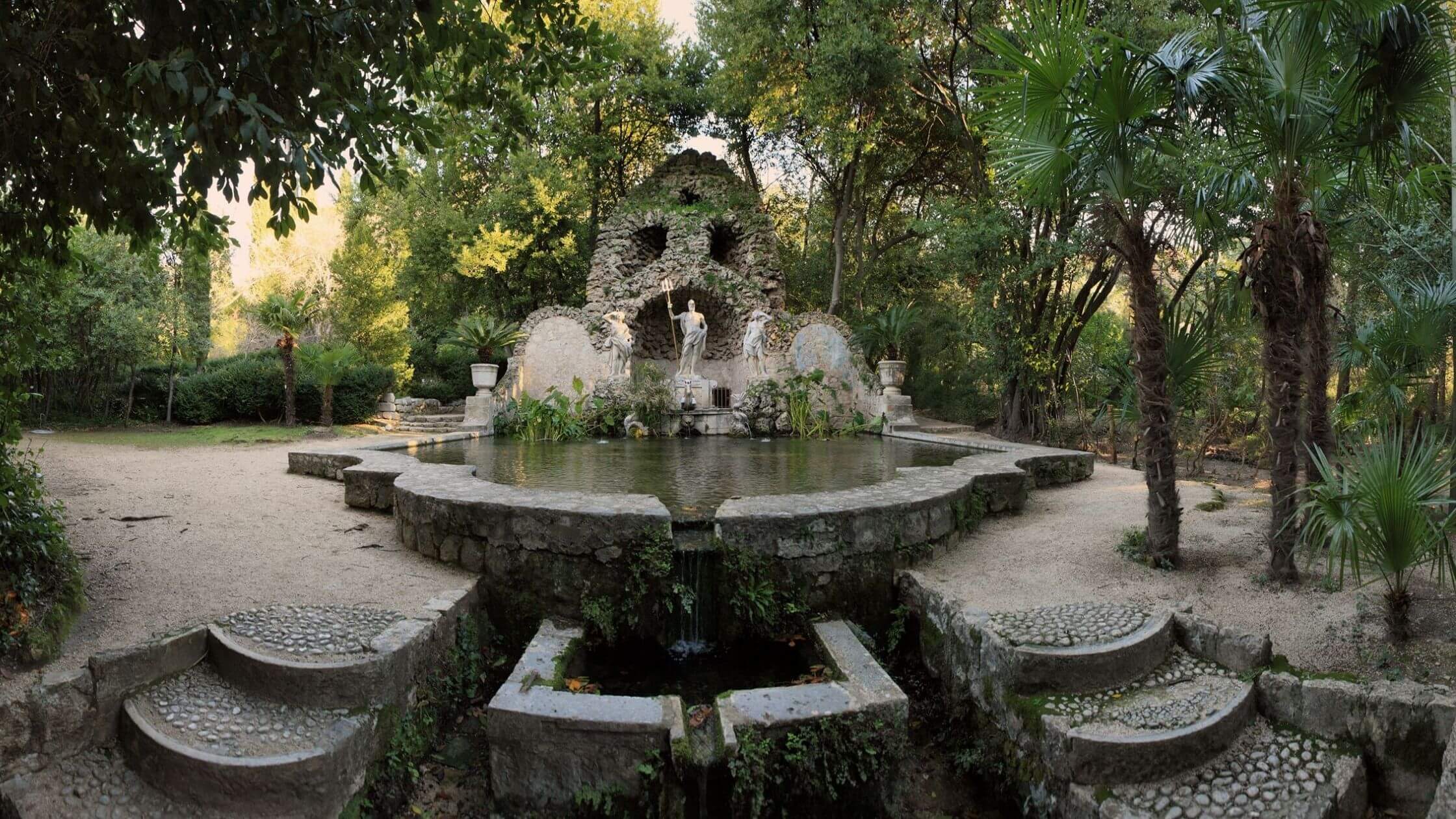
Trsteno Arboretum. Dubrovnik Tourism Board/Facebook
This Valentine’s Day, if you’re looking for inspiration for your next vacation, we highlight 7 additional international movies and television series set in Croatia to add to your list of “must-sees”.
1. The Weekend Away (2022)
Starting with the upcoming Netflix thriller set to premiere March 3rd, The Weekend Away, starring Leighton Meester of “Gossip Girl” fame.
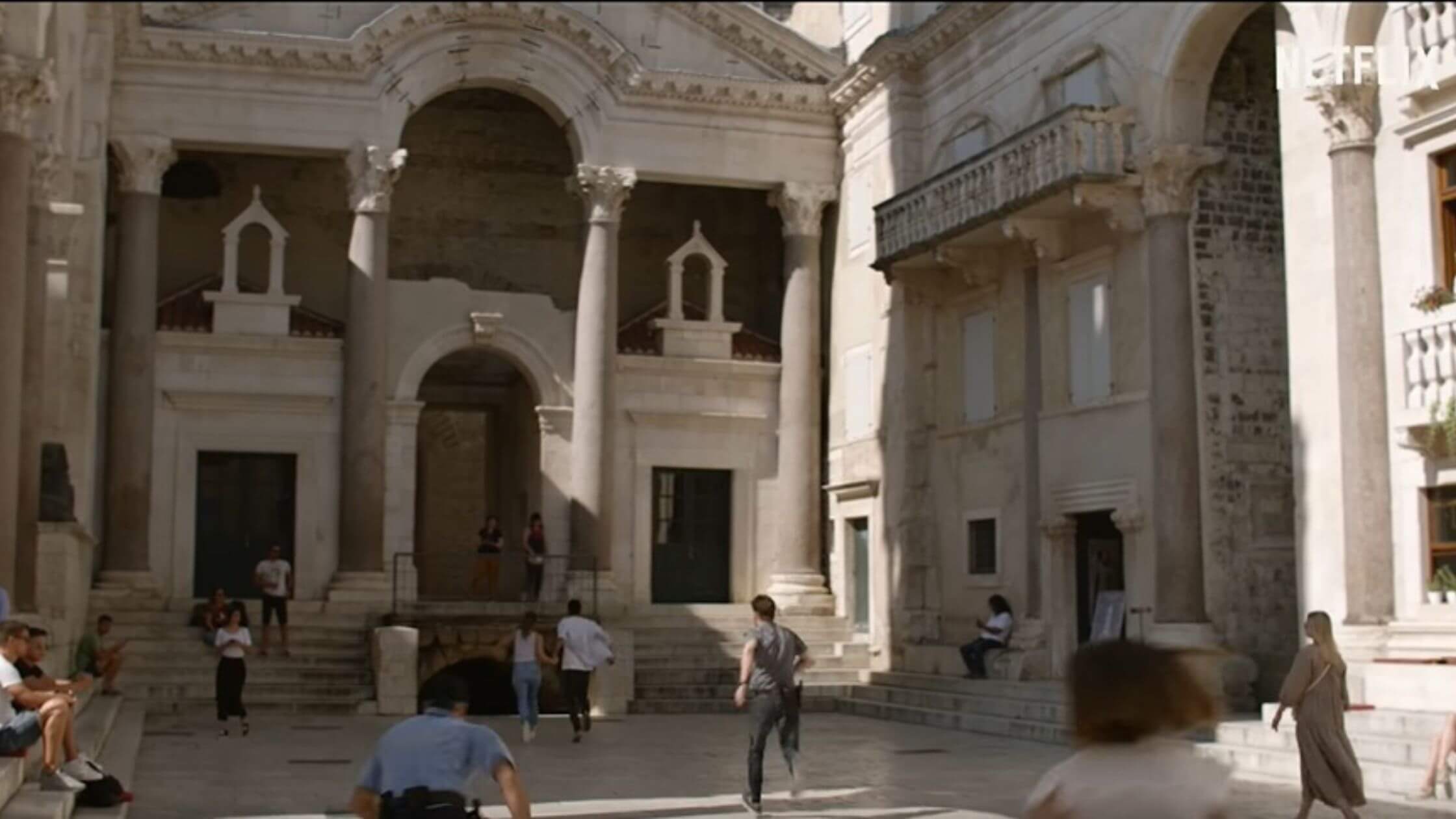
Diocletian's Palace, Split. Netflix/Screenshot
The trailer heavily features scenes in Split’s Diocletian's Palace, showcasing the UNESCO World Heritage Site. The palace was built with local limestone and marble from nearby island Brač for Roman emperor Diocletian in the fourth century AD.
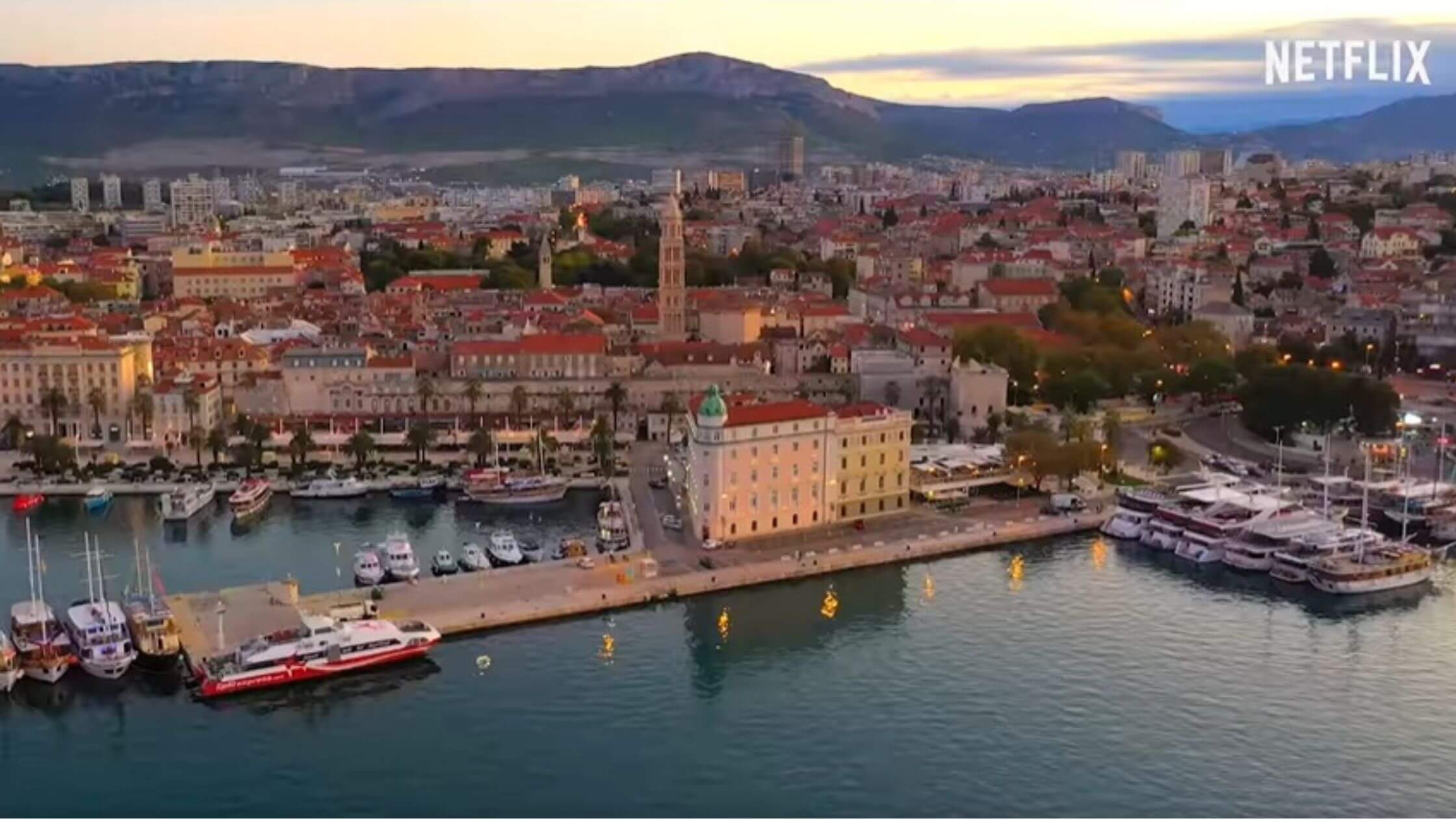
Downtown, Split. Netflix/Screenshot
Several scenes were also filmed in downtown Split and along Firule beach.
The film is adapted from the best-selling novel of the same name by Sarah Alderson. It follows Beth and Kate, best friends who plan a weekend getaway to Croatia. In a twist of fate, Kate ends up dead while Beth becomes the prime suspect. Whilst Beth fights to prove her innocence, painful secrets are uncovered along the way.
2. The Hitman’s Wife’s Bodyguard (2021)
As a sequel to The Hitman’s Bodyguard (2017), bodyguard Michael Bryce and hitman Darius Kincaid team up again for another life-threatening mission in The Hitman’s Wife’s Bodyguard.
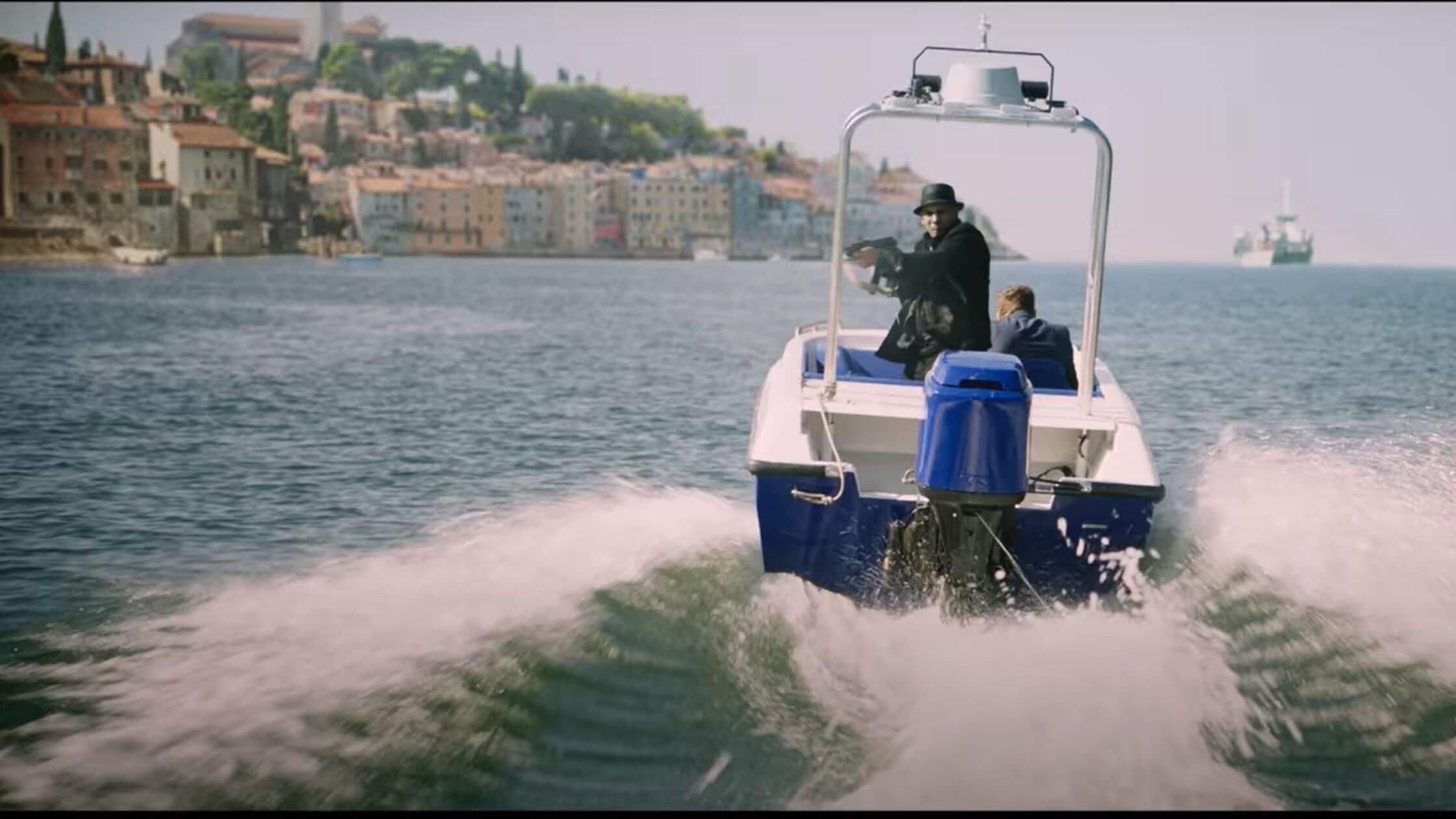
Backdrop, city of Rovinj. Lionsgate/Screenshot
The charming town of Rovinj, on the Istrian Coast of Croatia, doubled for various Italian settings along the Amalfi Coast.
There was also an impressively planned stunt scene staged where a van, pursued by an SUV, drives down steps in the port city of Rijeka.
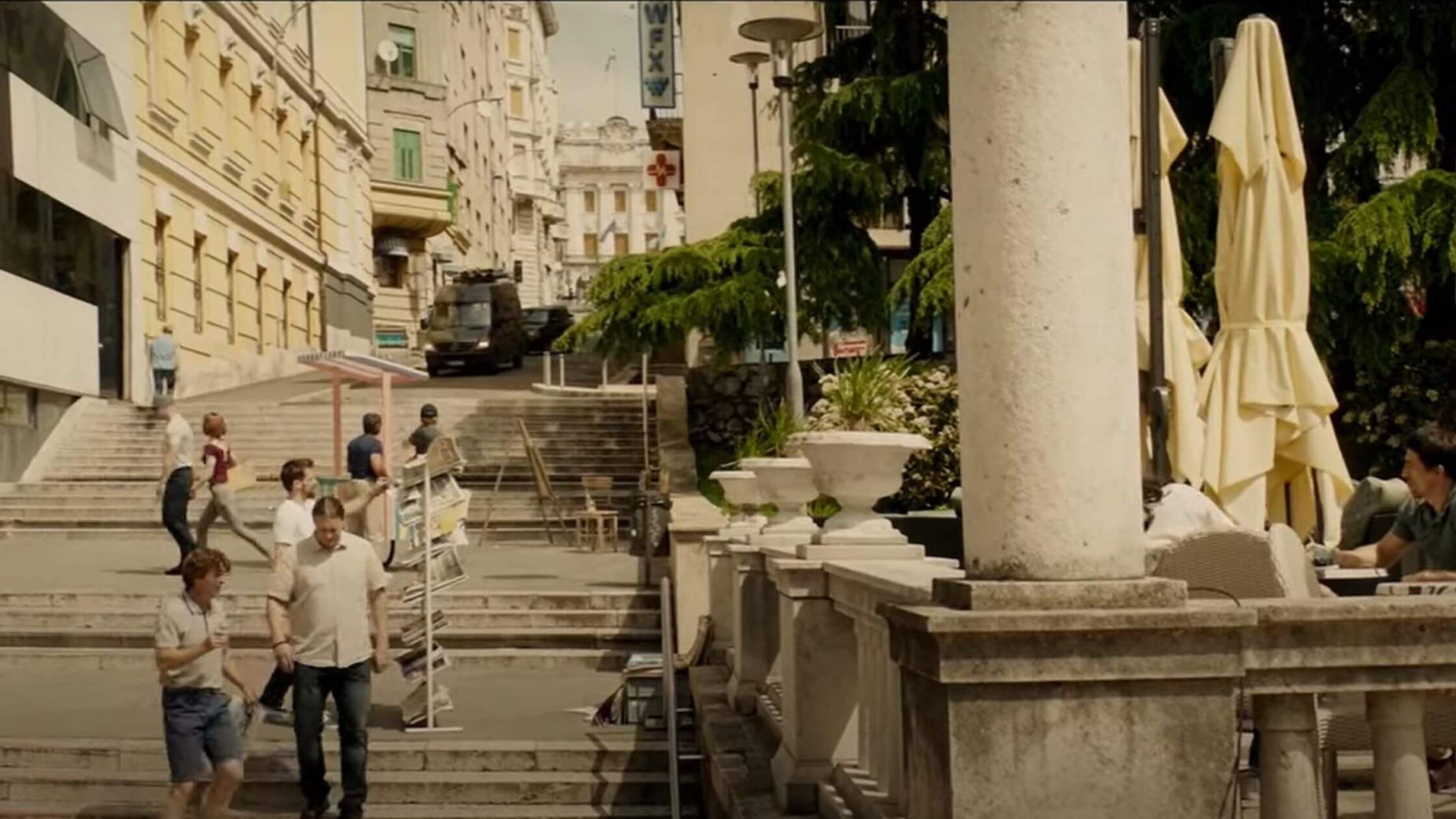
Steps of Rijeka. Lionsgate/Screenshot.
According to imdb.com, stunt coordinator Greg Powell explained that they “were often under a lot of restrictions because of the narrow streets and shiny cobbled surfaces, which are slippery as hell, especially when damp”. He added that “we'd have scenes that called for us to be speeding around corners, but we literally couldn't”
3. Bliss (2021)
Protagonist Greg, while down on his luck, meets a mysterious woman, Isabel. Is she real or just a fantasy? As he struggles to make a distinction, we are left to question whether he is caught in a complex computer simulation, or merely experiencing a drug-induced hallucination.

Galerija Meštrović, Split. Amazon studios/Screenshot.
To portray this fantasy world, several locations were filmed in Split and on the island of Lopud, Croatia
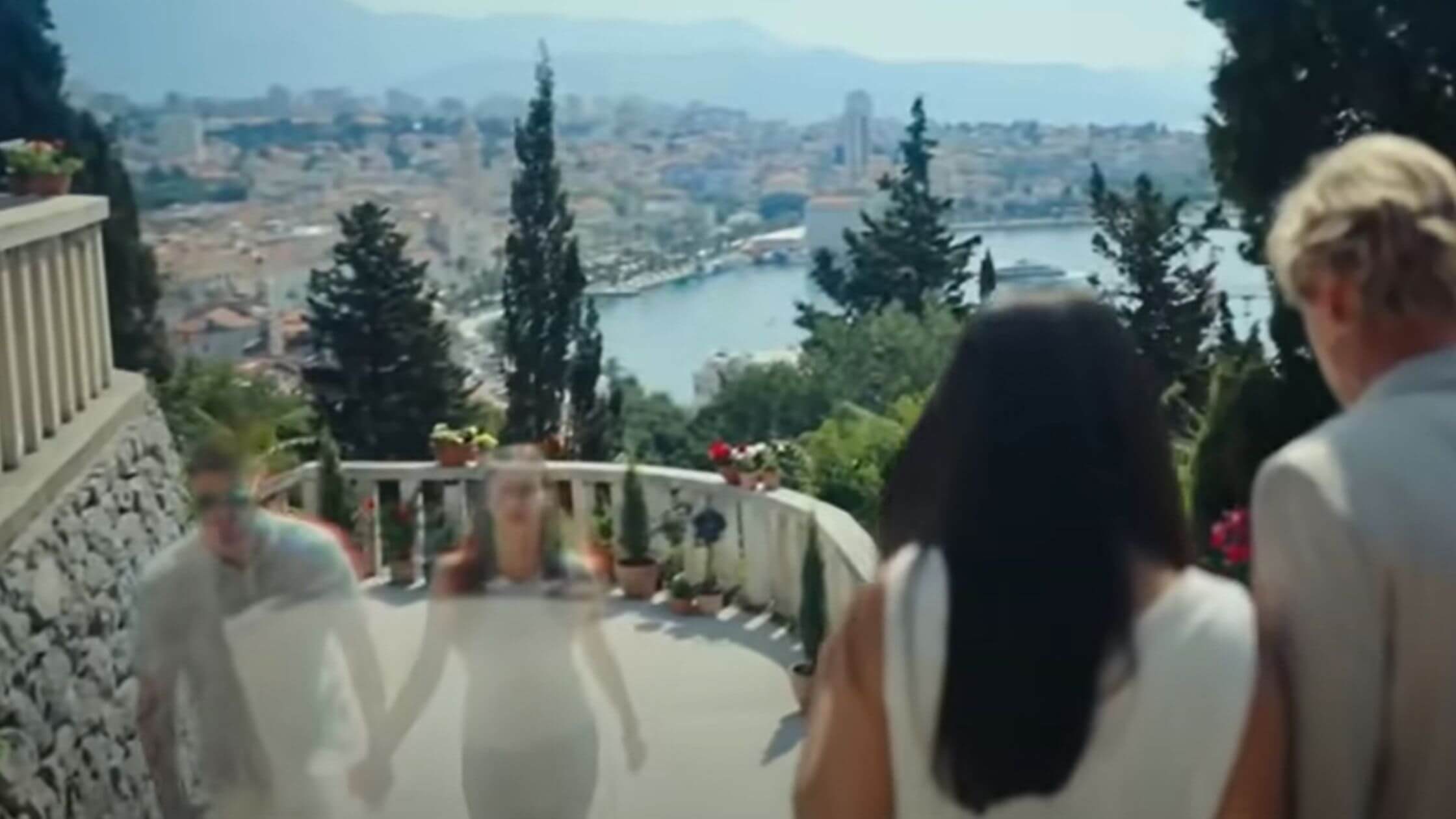
Marjan stairs, Split. Amazon Studios/Screenshot.
4. Succession (2018 - present)
This 7-time Emmy award-winning HBO series centers on the Roys, a highly dysfunctional family that owns global entertainment conglomerate Waystar RoyCo. The declining health of the family's patriarch, Logan Roy, ignites an endless fight for power and control.
In the Season 2 finale, scenes portrayed the Roys on vacation along the Croatian coast aboard a luxury yacht.
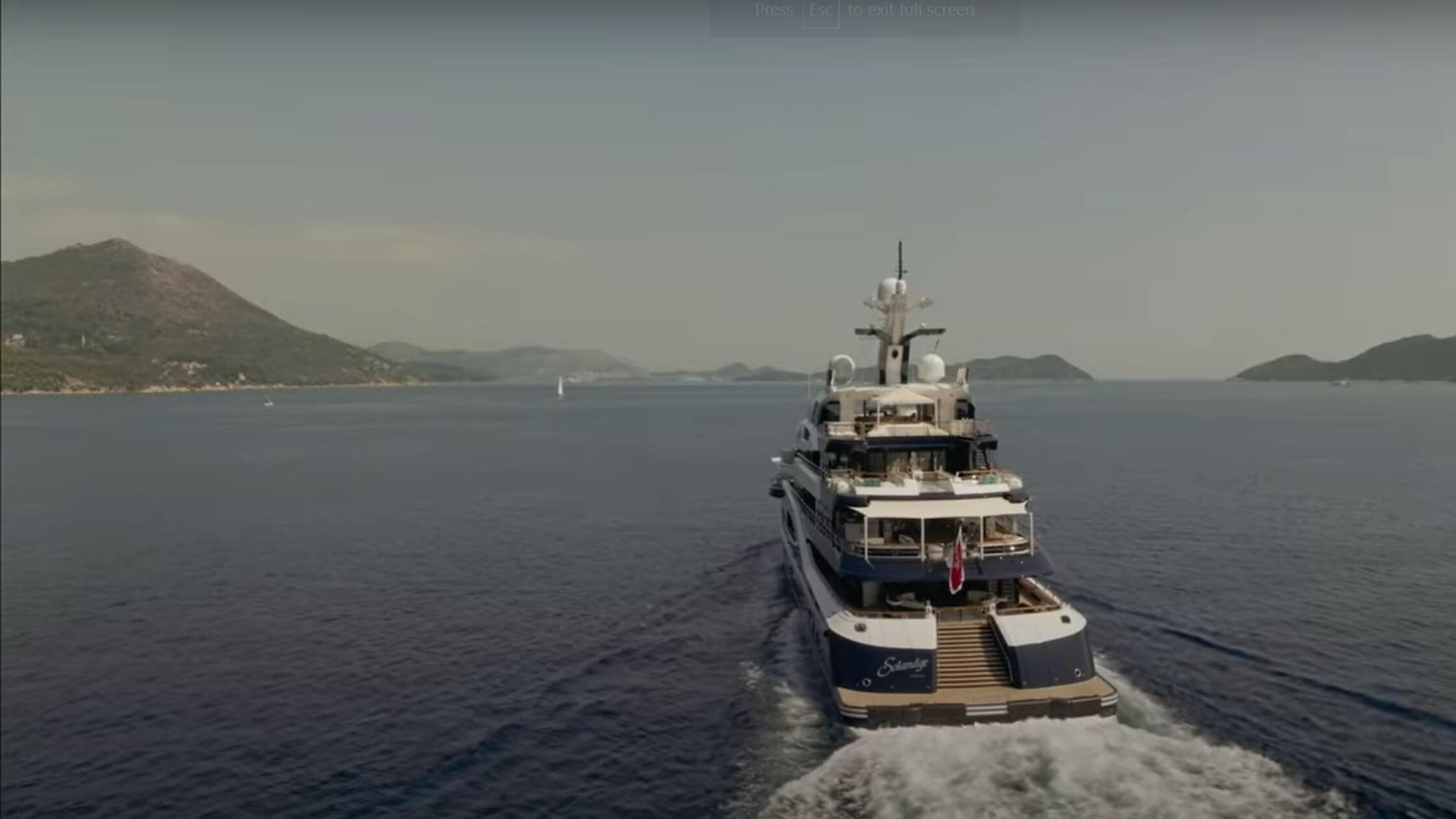
The Roys on vacation. HBO Max/Screenshot
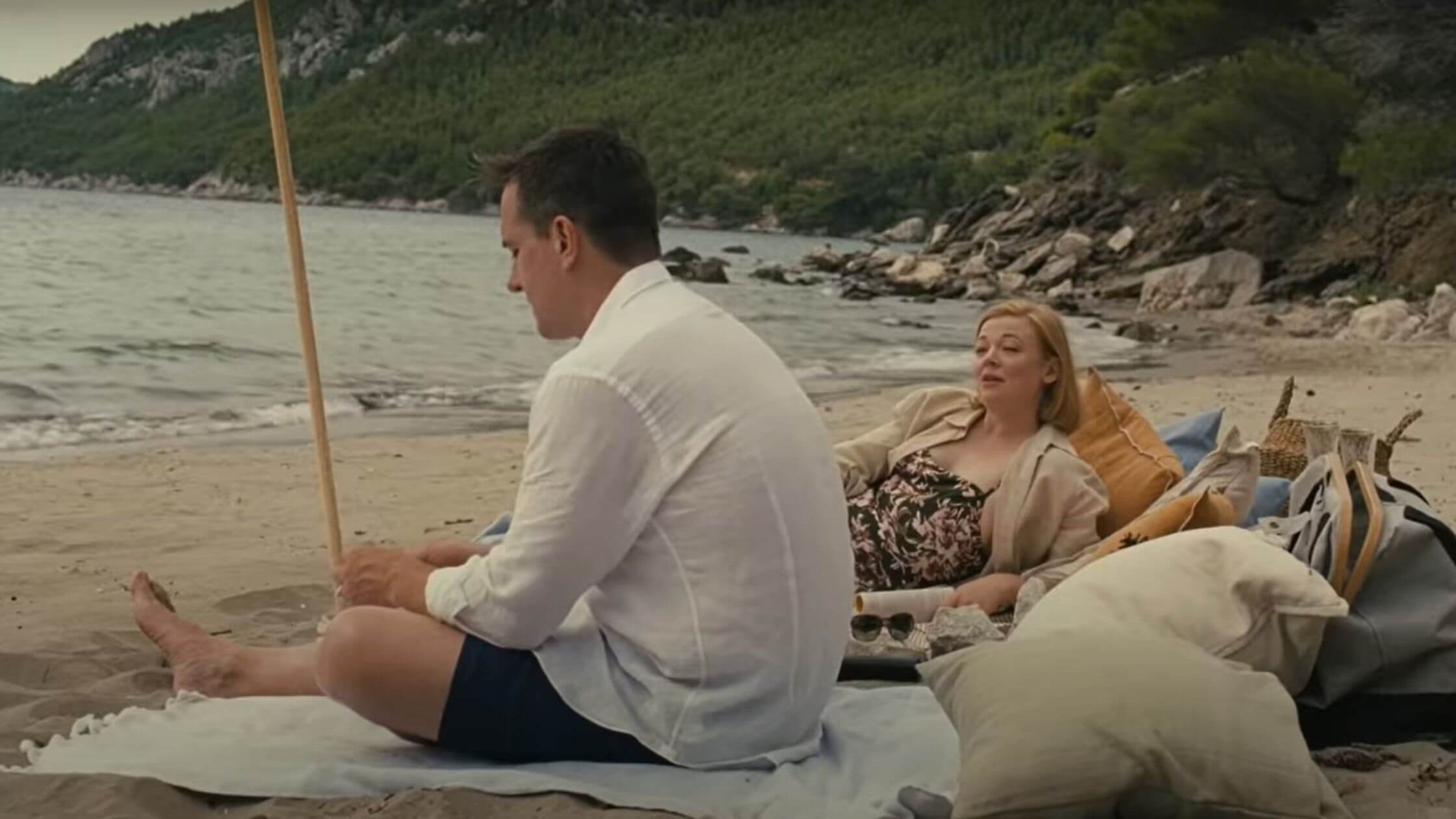
Season 2 finale. HBO Max/Screenshot
Filming took place in July 2019 and lasted 12 days as the crew traveled around Cavtat, a picturesque region south of Dubrovnik, and the islands of Korčula, Mljet, and Šipan.
Shooting also took place at locations around Zagreb and Rijeka.
5. Mamma Mia: Here we go again (2018)
Returning to where it all began, Donna looks back on her fun and adventure-filled young life as we rediscover the moments where she meets Sophie’s three possible dads.
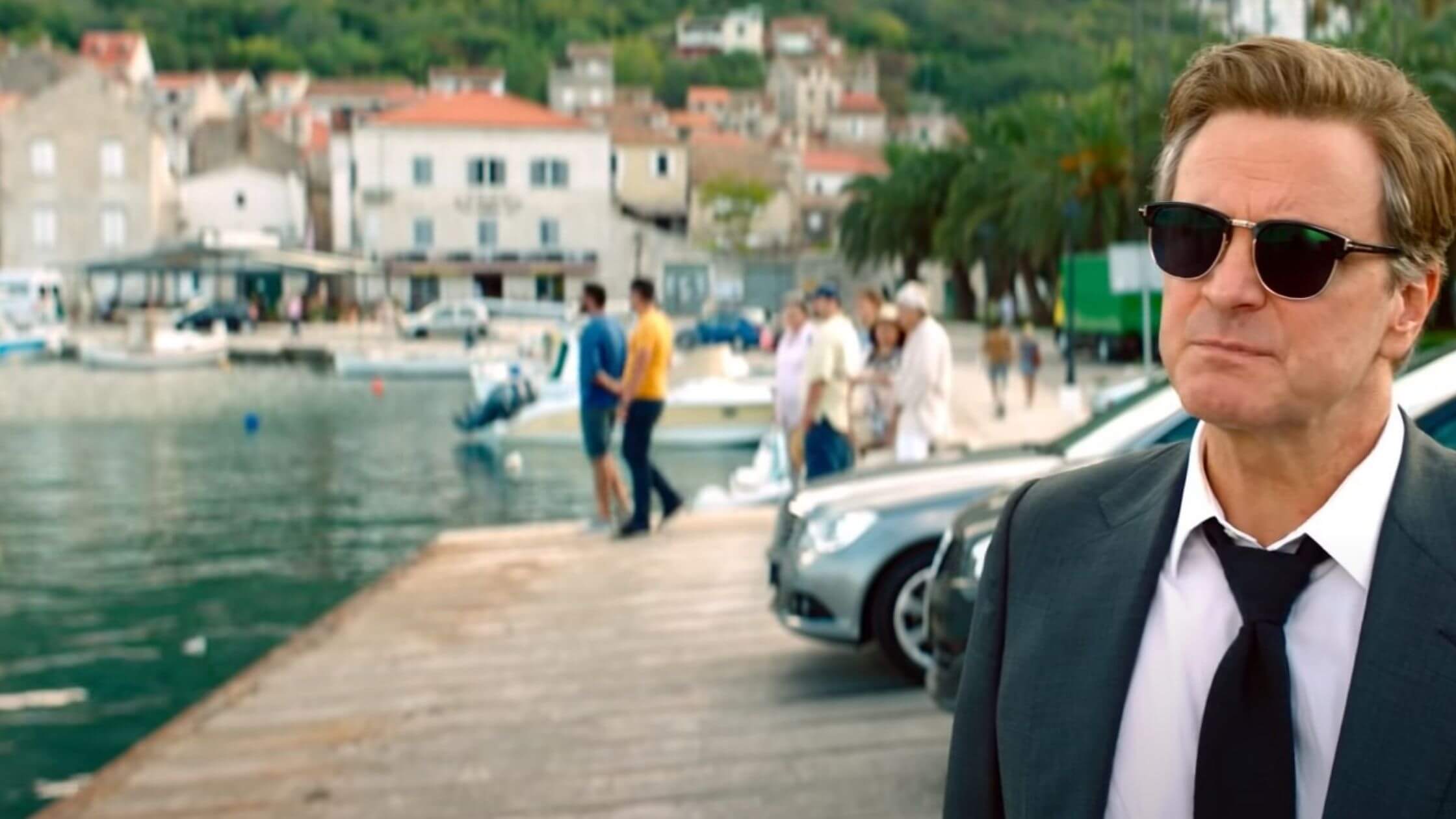
One of Sophie’s possible dads, played by Colin Firth, arriving in the port of Vis. Universal Pictures/Screenshot
Although the movie was supposed to be set in Greece (fictional island of Kalokairi), filming almost exclusively took place in several locations on the exquisite Croatian island of Vis including Vis harbor, St. Jeronim (St. Jerome) Church, Stiniva, Srebrna, and Barjoška bays.
Fun fact from imdb.com, actors Hugh Skinner, Jeremy Irvine, and Josh Dylan, who played Harry, Sam, and Bill's younger counterparts, lived together in a Croatian villa while filming for 6 weeks. Josh Dylan also arrived in the country 2 weeks earlier to learn how to sail.
6. Robin Hood (2018)
Actors Taron Egerton and Jamie Foxx take on the roles of Robin Hood and Little John in a movie remake of the classic tale that combines historical accuracy, contemporary and futuristic elements to achieve its unique take.
Filming began in February 2017 and lasted over 4 months between different primary locations in Dubrovnik, Croatia, and Raincy, France.
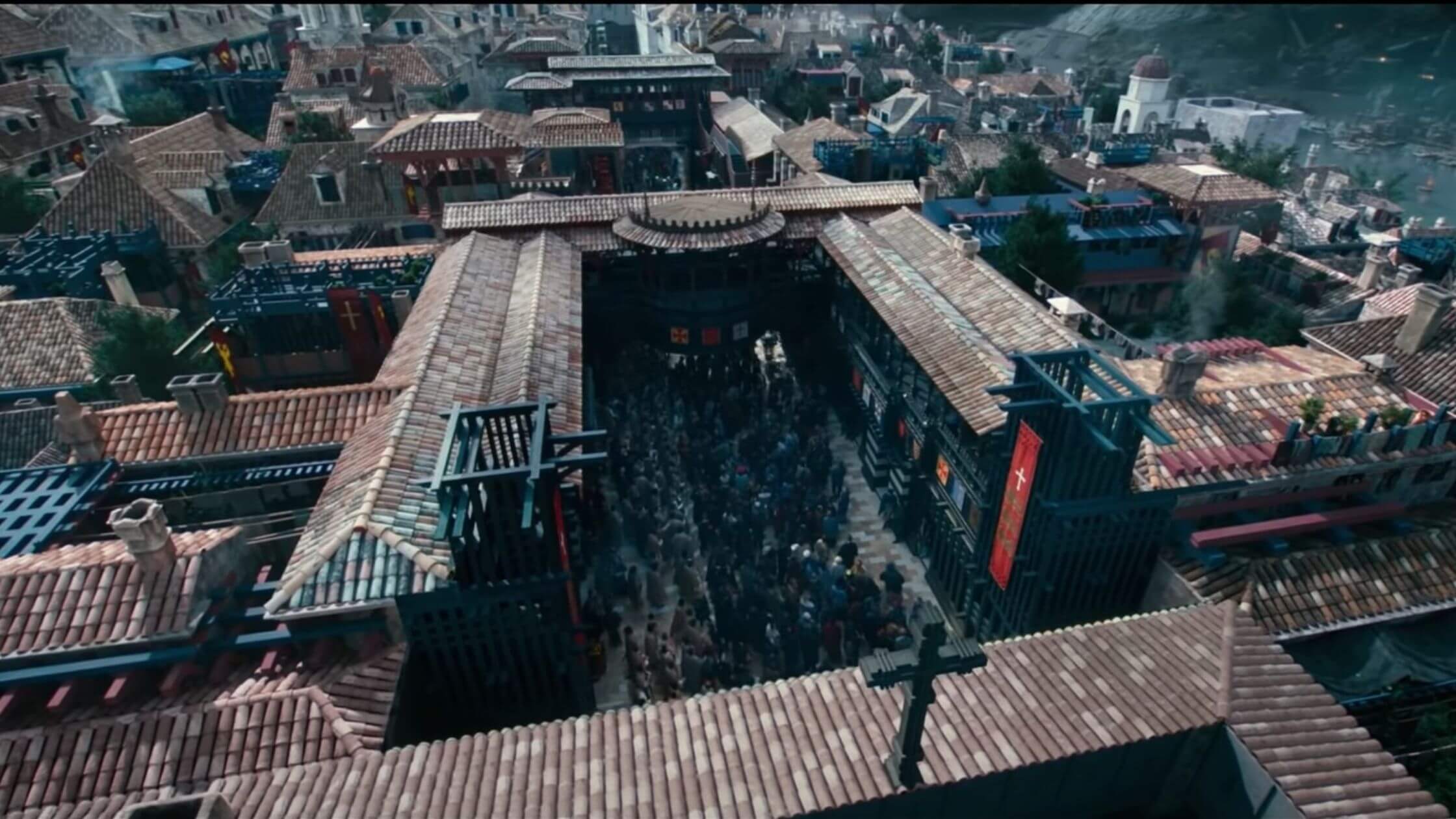
Enhanced aerial shot of Dubrovnik. Lionsgate/Screenshot
Incident alert! While filming in Dubrovnik, Jamie Foxx was harassed by two drunk locals while having dinner at a restaurant. The men were immediately thrown out by the manager, and police subsequently pursued misdemeanor charges. They were later fined and jailed. Despite this negative isolated incident, Jamie Foxx went on to say that the beauty of the country continued to “blow his mind” and is a “dream come true”.
7. Star Wars: The Last Jedi (2017)
This might be a hard one for fans to spot, but several scenes of Dubrovnik, Croatia make a cameo in the landscape of Star Wars: The Last Jedi.

Stradun, downtown Dubrovnik. Dubrovnik tourism board/Facebook
Without the special effects and digital rendering, you might be able to recognize downtown Dubrovnik as the fictional city of Canto Bight. Portrayed as an interstellar entertainment and nightlife hotspot, the design of Canto Bight was inspired by the city of Monaco.
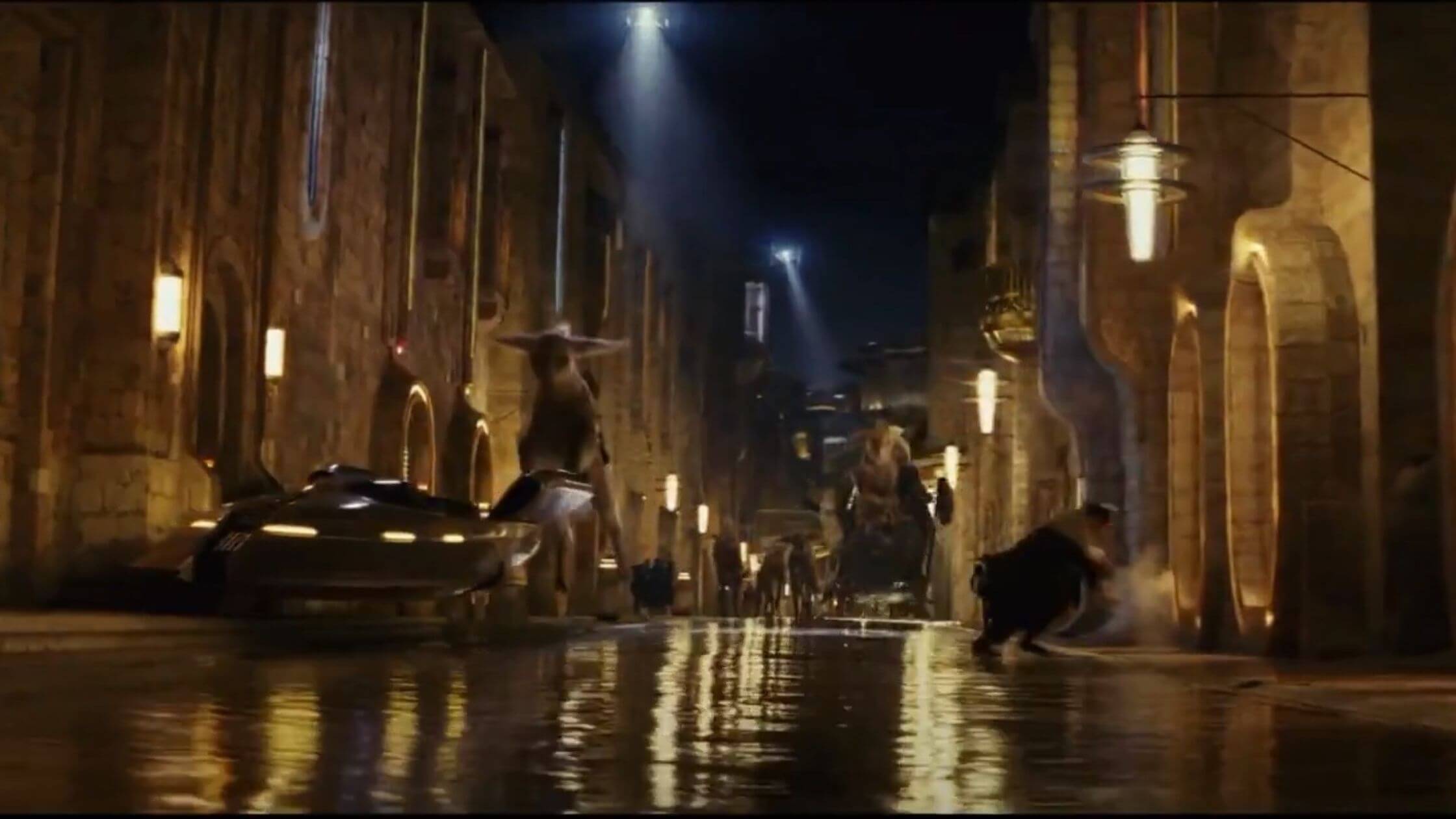
Star Wars The Last Jedi, Canto Bight chase scene. Disney/Screenshot
The explosive chase scene where Finn and Rose escape from Canto Bight prison while riding a Fathier, was also filmed on the main street of Dubrovnik.
For everything you need to know about filming in Croatia, in your language, be sure to check Total Croatia's page.
For more, check out our lifestyle section.
Adriatic-Ionian Highway to Pass through Trebinje, Not Dubrovnik?
February 14, 2022 - Is the regional branch of the Adriatic-Ionian highway going through the hinterland, from Pocitelj to Aranđelovo near Trebinje and completely bypassing Dubrovnik and Croatia?
While there is euphoria in Croatia about the imminent launch of the Peljesac Bridge, the first neighborhood Public Company, FBiH Motorways, has just announced a public call for a preliminary and main project of the Adriatic-Ionian Corridor, section Stolac - Interregional junction Pocitelj, about 23 kilometers long, reports Dubrovacki Vjesnik.
This news would not be so crucial for Croatia if it did not lead to a new possible traffic (dis)connectivity problem for Dubrovnik-Neretva County. And it has people wondering if Pocitelj is becoming the central hub from Trieste to Greece, and the new Peljesac bridge just a local bypass?
After 20 years of waiting for the road junction, no one on this side of the border wants to think that the Peljesac Bridge and access roads could 'lose out' if the regional branch of the Adriatic-Ionian highway goes through the hinterland, from Pocitelj to the endpoint Aranđelovo near Trebinje on the Montenegro border and completely bypasses Croatian territory.
So far, the Adriatic-Ionian traffic route has been talked about as a benefit for the traffic-isolated south, primarily due to the completion of the Peljesac Bridge and the expected passage of the highway through the Neum area.
Whether our largest infrastructure project will fit into this mold should be more apparent after March 15, when the deadline for applications from contractors interested in building the Stolac-Pocitelj section expires. The contractual value of the documentation is estimated at 6 million convertible marks without VAT, and the planned completion date is 18 months. The designers see the beginning of the route in Pocitelj as a connection with the Pan-European Corridor Vc (from Venice to Kyiv). In addition to Stolac and Capljina, it would include Ravno, Ljubinje, Trebinje, and further towards Montenegro, without a visible connection with Croatia.
However, in Croatian professional and political circles, they do not believe that the Peljesac Bridge will remain marginalized on the future road route.
On the topic of road construction in the hinterland, Dubrovnik-Neretva County Prefect Nikola Dobroslavić points out:
"Each state is thinking about how to connect its territory, so we do not want to comment on these intentions and moves of our neighboring BiH and the Federation of BiH. As for the Republic of Croatia, it is planned to connect the extreme south of Croatia by highway from the Metkovic junction to Osojnik with an exit to BiH (as part of the Adriatic-Ionian highway), the expressway Zračna Luka - Dubrovnik - Osojnik, and the expressway Brijesta - Perna. This is stated in Croatia's National Development Strategy and all spatial plans of Dubrovnik-Neretva County and supported by the conclusions of the Government at the session in Dubrovnik in 2019," said Dobroslavić and reminded that for all the listed planned roads, study documentation is being prepared from Hrvatske ceste, i.e., Hrvatske autoceste, and realization is expected.
Last year, at the seminar of the Croatian Engineering Association and the Society of Civil Engineers in Zagreb, Dobroslavić reiterated that the position of Dubrovnik-Neretva County has always been to connect the extreme south of Croatia to the motorway network as strongly as possible.
"We must do it quickly to benefit our fellow citizens and tourists, but these are, let's not forget, geostrategic solutions for the Republic of Croatia. We see instabilities around us, and we need to think about ourselves and our security. Therefore, the only possible connection of Croatia is by a highway, which in our opinion should be the Adriatic-Ionian highway that passes through Dubrovnik-Neretva County," said Dobroslavić.
The position of the Ministry of the Sea, Transport and Infrastructure in the field of road construction towards the southernmost county is also unequivocal:
"Southern Croatia must be connected by highway after constructing the Peljesac Bridge. Therefore, this part of Croatia deserves to be the largest construction site in the road segment. Apart from the Peljesac Bridge and the highway to Dubrovnik, one of the biggest segments must be the connection of Dubrovnik Airport with the City of Dubrovnik. We are also planning to reconstruct the Peljesac road with the Orebic bypass with a new ferry port in Orebic," said the State Secretary at the Ministry Tomislav Mihotić last autumn at the same meeting in Dubrovnik.
Croatian Motorways, meanwhile, has intensified talks on building 47 kilometers of motorways with another 14.7 kilometers of connecting roads from the Metkovic junction to the Dubrovnik (Osojnik) junction at the cost of 1.2 billion kuna.
The highway project from Metkovic to Dubrovnik was divided into two sections. The first section is the Metkovic - Peljesac junction - Duboka junction, about 22 kilometers long, which includes the construction of 17.5 kilometers of motorways from Metkovic to the Peljesac junction and 4.45 km of highway from the Peljesac junction to the Duboka junction.
The second section would go from the Rudine junction to the Osojnik junction and include the fast road from the Ston junction to the Doli junction (5.5 km) and the connecting road Slano junction to DC8 (4.7 km). The motorway section from the Rudine junction to the Osojnik junction is 29.5 kilometers long and includes constructing a connection between the Rudine junction and the existing road network.
According to HAC, these two motorway sections will continue on the access highways on Peljesac and the Peljesac bridge.
However, domestic road construction experts find it difficult and reluctant to talk about projections for the future because they have repeatedly proved ungrateful. However, it is enough for the layman to remember that the complete profile of the highway includes four lanes, which is not feasible due to the narrowed territory in the extreme south. It isn't easy to go with much narrower roads.
Minister of Transport Oleg Butkovic commented on his visit to the City of Dubrovnik two years ago about the strategic project of the expressway to the Dubrovnik Airport and explained why everything still stands:
"We are currently investing 6.7 billion kuna in transport infrastructure; these are large infrastructure projects. We cannot do all projects at the same time. The project is announced, and we will make it when the project and study documentation is ready, done, and finished, and it will be a candidate for the next operational period. We are completing the Peljesac Bridge, the Airport, and of these big projects, this will be the next one we will work on. There will be no problems; the expressway will relieve the state road. The D8 road is congested, and there must be a relief," said Butković.
For more news in Croatia, follow TCN's dedicated page.


